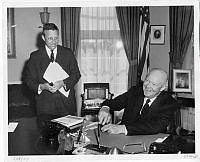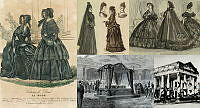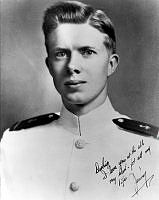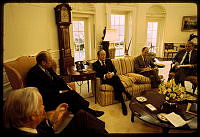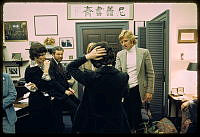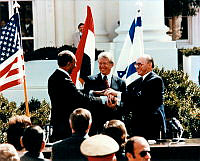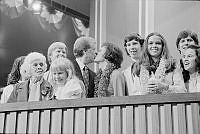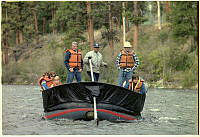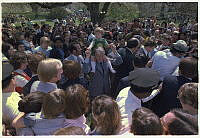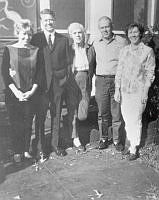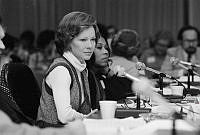The West Wing: 1925-1949
Copyright © White House Historical Association. All rights reserved under international copyright conventions. No part of this article may be reproduced or utilized in any form or by any means, electronic or mechanical, including photocopying, recording, or by any information storage and retrieval system, without permission in writing from the publisher. Requests for reprint permissions should be addressed to books@whha.org
1929: Herbert Hoover was the first president to have a telephone installed on his desk on March 27. A fire on Christmas Eve 1929 gutted the executive office building and a reconstruction began immediately.

1934: President Franklin D. Roosevelt increased the office area of a now permanent office wing from 15,000 to 40,000 square feet. A "penthouse" story and an enlarged subterranean office area with a light well were built. The Oval Office was relocated to the West Wing’s southeast corner-its present location-to overlook the Wilson Rose Garden.
1935: The Social Security Act was signed by President Franklin D. Roosevelt in a bill-signing ceremony in the Cabinet Room on August 14.

1941: Crowds of angry Americans surrounded the White House grounds on December 7 as news spread of the Japanese bombing of Pearl Harbor. The Secret Service installed bulletproof glass in the windows of the president’s Oval Office, sentries patrolled the roof with machine guns, and builders constructed a bomb shelter under a new East Wing (1942).
1945: On April 12, Harry S. Truman was sworn in as president in the Cabinet Room. The ceremony, according to Truman’s recollections, took one minute, 7:08-7:09 p.m. On August 14, 1945, President Truman held a press conference in the Oval Office to announce Japan’s surrender and the end of World War II.
1949: To avoid confusion the White House Executive Office Building became known officially as the West Wing when the adjacent Department of State Building (Eisenhower EOB) was converted for use as executive offices.














